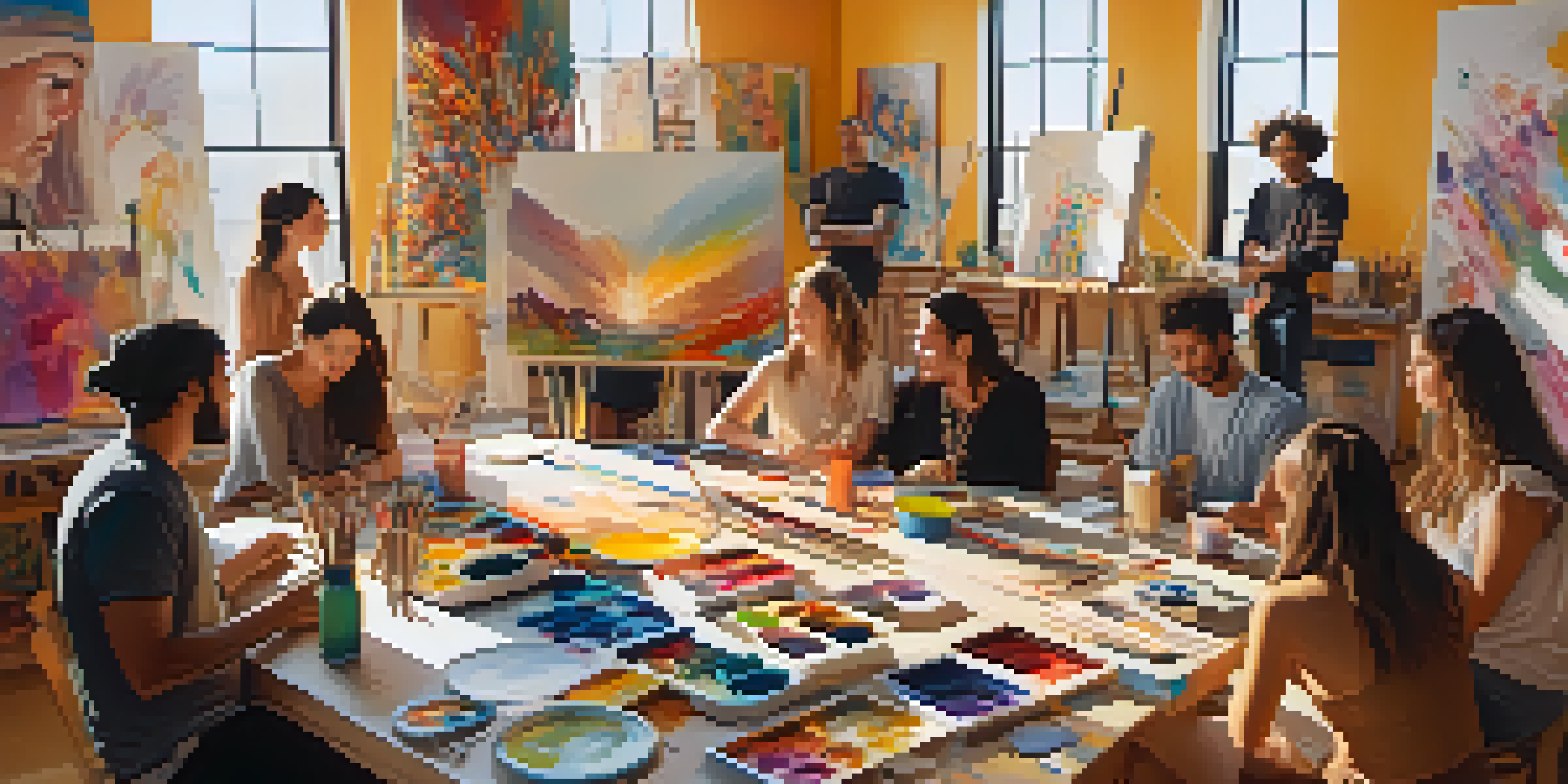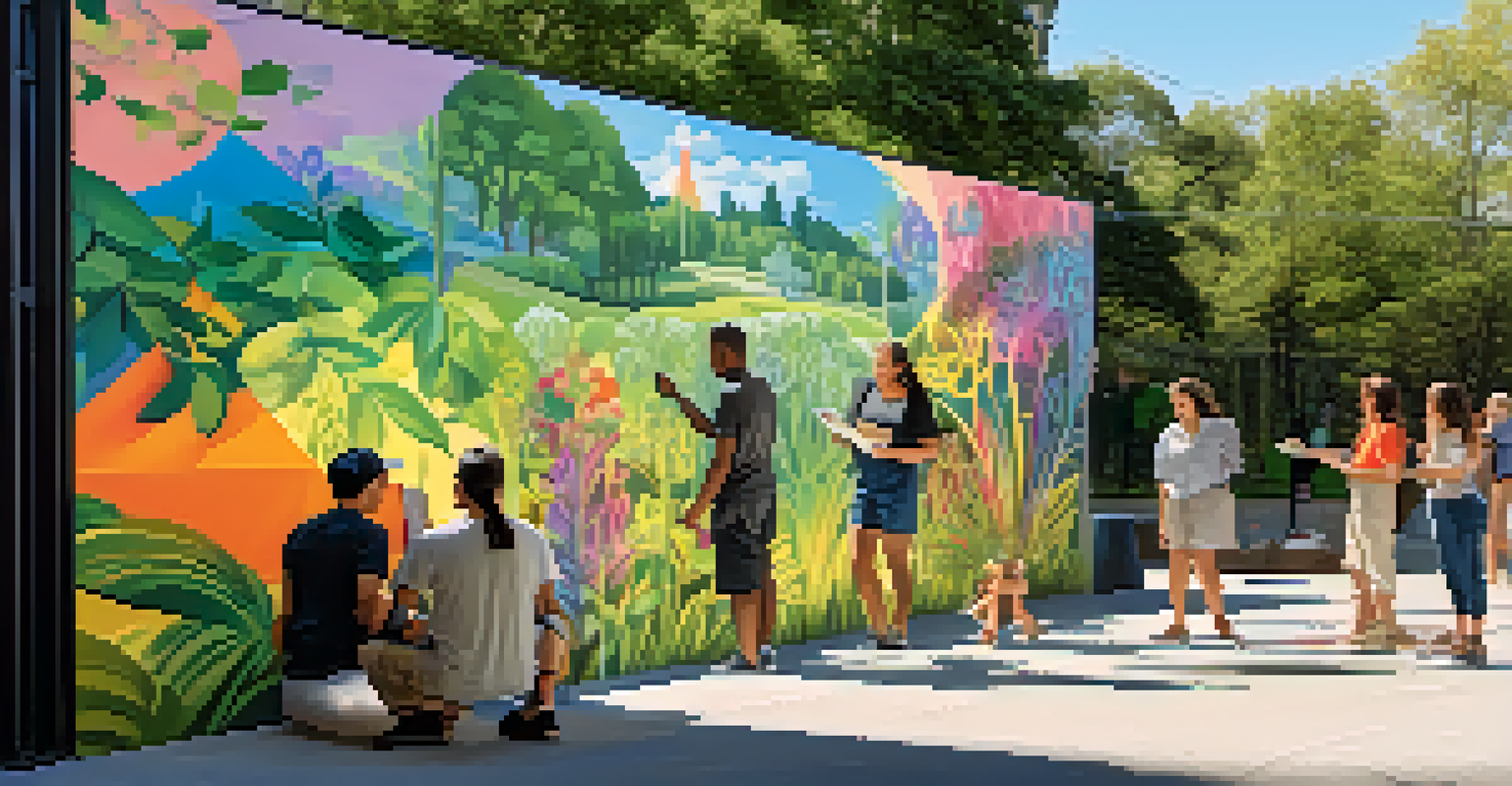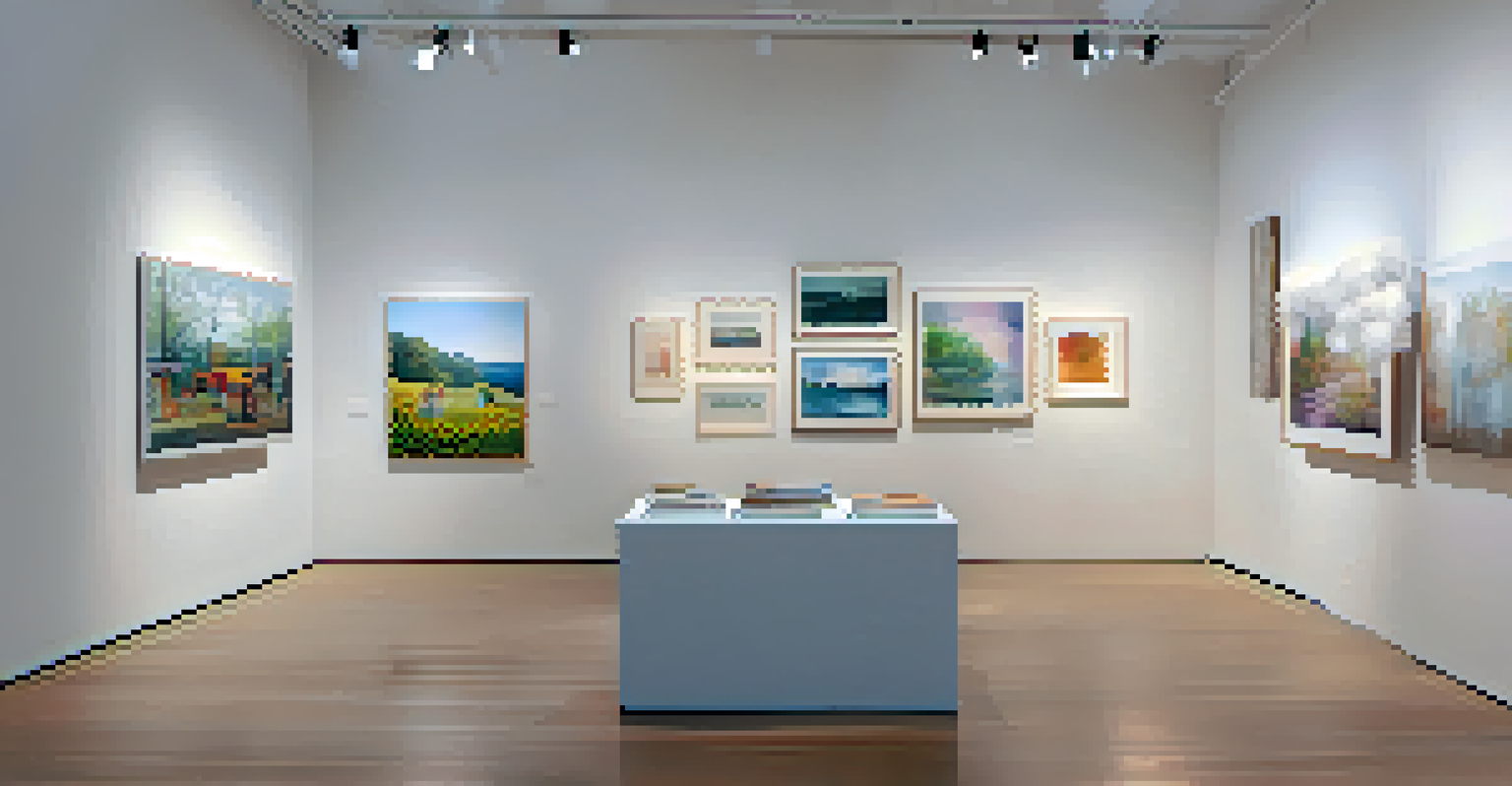Art Collectives: Collaborations Shaping Contemporary Painting

Understanding Art Collectives in Contemporary Context
Art collectives are groups of artists who come together to share resources, ideas, and creative energies. This collaboration often leads to innovative approaches that challenge traditional art forms. By pooling their talents, members can create works that reflect a diverse range of perspectives and techniques.
Art is not a solitary pursuit; it thrives in collaboration and community.
In today's art world, collectives are becoming increasingly important as they foster a sense of community and support among artists. This is especially vital for emerging artists who may struggle to find their footing in a competitive environment. Collectives provide a platform for collaboration, experimentation, and growth.
These groups often operate outside conventional galleries, choosing instead to create their own spaces for exhibitions and events. This independence allows them to break free from the constraints of the commercial art market, making room for more authentic and meaningful expressions of creativity.
Key Features of Successful Art Collectives
Successful art collectives often share a few key features that contribute to their effectiveness. A strong sense of purpose is essential, as it unites members under a common goal or vision. This shared intent can drive the collective's activities and provide a framework for collaboration.

Open communication is another crucial element. Members must feel comfortable sharing ideas, critiques, and support, fostering a trusting environment. This openness leads to greater creativity, as artists can push each other to explore new techniques and concepts without fear of judgment.
Art Collectives Foster Collaboration
Art collectives unite artists to share resources and ideas, leading to innovative and diverse artistic expressions.
Lastly, successful collectives often embrace diversity, welcoming artists from various backgrounds and disciplines. This variety not only enriches the artistic output but also encourages members to learn from one another, ultimately enhancing the collective's overall impact on contemporary painting.
Notable Art Collectives Making Waves Today
Several art collectives have garnered attention for their innovative contributions to contemporary painting. One such group is 'The Still House Group,' which emphasizes collaboration and experimentation, allowing artists to push boundaries in their work. Their exhibitions often highlight the dynamic interplay between individual styles and collective themes.
Creativity is not a competition; it's a collaborative process that can yield incredible results when we work together.
Another noteworthy collective is 'The New Museum's 'New Inc.' program, which supports artists and technologists in a collaborative environment. This initiative encourages cross-disciplinary projects, merging art with technology to create groundbreaking installations and experiences.
The 'Los Angeles Art Collective' is also making headlines, known for its commitment to social issues and community engagement. By leveraging their collective strength, these artists address pressing topics through their work, demonstrating the power of art as a vehicle for change.
The Role of Technology in Art Collaborations
Technology has transformed the way art collectives operate, enabling collaboration across geographical boundaries. Digital platforms allow artists to connect, share ideas, and create collaboratively, regardless of their physical location. This has led to a more global perspective in contemporary painting.
Moreover, technology enables new forms of artistic expression. Artists within collectives can experiment with digital media, virtual reality, and interactive installations. These innovative approaches can enhance the viewer's experience and broaden the scope of contemporary painting.
Technology Enables Global Artistry
Digital platforms allow art collectives to collaborate across distances, enhancing creativity and broadening contemporary painting's scope.
Social media also plays a significant role in the visibility of art collectives. Platforms like Instagram allow artists to showcase their work to a larger audience, attracting attention and fostering connections with potential collaborators and collectors.
Challenges Faced by Art Collectives
Despite their many benefits, art collectives face challenges that can hinder their success. One significant issue is the potential for creative differences among members, which can lead to conflicts and fragmentation. Balancing individual artistic visions within a collective framework requires strong communication and compromise.
Funding is another common challenge. Many collectives operate on limited budgets, making it difficult to secure resources for exhibitions, materials, and operational costs. This financial strain can impede their ability to realize ambitious projects and reach wider audiences.
Additionally, navigating the art market can be complex for collectives. Without a clear brand identity or established reputation, they may struggle to attract attention from galleries and collectors. Finding ways to market their work effectively is crucial for their long-term sustainability.
Impact of Art Collectives on Contemporary Painting
Art collectives have a profound impact on contemporary painting by challenging established norms and encouraging experimentation. Their collaborative nature fosters a spirit of innovation, pushing artists to explore new ideas and techniques. This leads to the emergence of fresh styles and movements that enrich the art landscape.
Moreover, collectives often prioritize social issues and community engagement, using their art to raise awareness and provoke dialogue. This socially-conscious approach resonates with audiences, making contemporary painting more relevant and accessible to a wider demographic.
Social Issues Drive Artistic Purpose
Many art collectives prioritize social engagement, using their work to address pressing issues and inspire change in their communities.
Ultimately, the influence of art collectives extends beyond the canvas. They inspire a new generation of artists to think collaboratively, embrace diversity, and utilize their platforms for advocacy, ensuring that contemporary painting remains a vibrant and evolving field.
The Future of Art Collectives in Painting
As we look to the future, art collectives are poised to play a crucial role in the evolution of contemporary painting. Their ability to adapt to changing cultural landscapes and embrace new technologies will allow them to remain relevant in an ever-evolving art world. This adaptability ensures that they can continue to foster creativity and collaboration.
Moreover, the increasing emphasis on social and environmental issues in art suggests that collectives will continue to prioritize advocacy in their work. This trend reflects a broader movement toward using art as a tool for social change, which is likely to gain momentum in the coming years.

Ultimately, the future of art collectives is bright. By nurturing collaboration, innovation, and social responsibility, they will continue to shape the trajectory of contemporary painting, inspiring both artists and audiences alike.